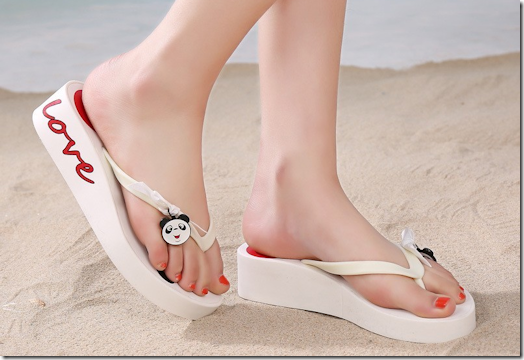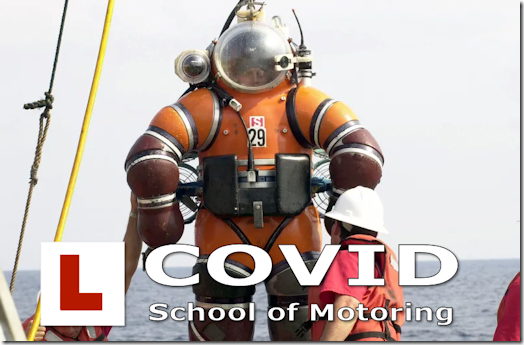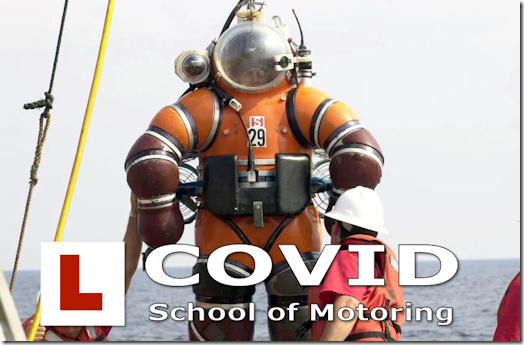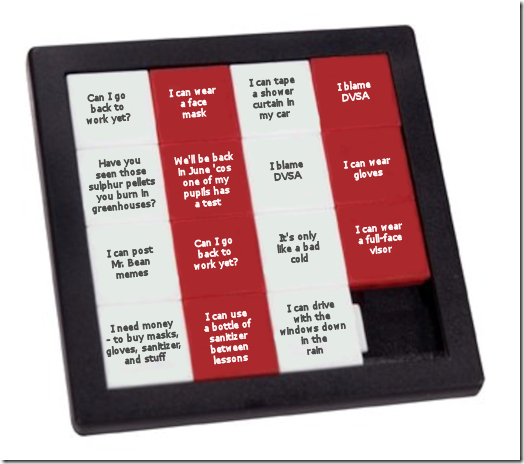 Question: Can I start doing lessons yet?
Question: Can I start doing lessons yet?
Answer: There is no Law which directly says you cannot. As in, there is no Law which specifically states ‘driving instructors must not give lessons’. This is probably why your grocer, your hairdresser, your mum, your nan, the police, DVSA, some weirdo you met in the park last night, all your Facebook ‘friends’, and any one of the millions of other people you have repeatedly asked the same question of hasn’t given you the answer that you want. And you’re not going to find the answer by resorting to ‘alternative news’ websites operated by anti-vaxxers and non-qualified ‘medical advisors’.
Obviously, you have a problem with simple logic. But let me try to help.
COVID-19 kills people. Even if it doesn’t kill you, it can kill others. And it does – quite a few of them so far, in fact. Unfortunately, whether or not it does kill you if you catch it can vary in probability from quite unlikely all the way up to virtually guaranteed. The problem is that you don’t know where you are in that range until you try it. And among the higher primates, that is generally regarded as a high-risk strategy, and one to be avoided unless you want to get on the wrong side of Natural Selection.
Now, this is where it is going to get really hard for you to understand. The COVID-19 virus itself is small – much smaller than anything you can imagine. You’d be able to fit more than 30,000 of them across a single French Fry that you’d get with, say, your Happy Meal. They are not physically stopped by anything other than a completely solid and sealed barrier. The simplest way of imagining them is by thinking what happens if either you or your pupil farts on a lesson (or if one of you is particularly odoriferous). Let’s call it the ‘Fart Factor’. Both of you can smell it no matter how much the culprit denies doing it, and neither of you can do anything realistically possible to avoid smelling it. If that fart (or BO) were COVID-19 wafting around, then smelling it means you caught it.
In order to reduce the spread of this fart-like COVID-19, it is important that close person-to-person contact is restricted and – wherever possible – eliminated. That is why we have the ‘2 metre rule’ to keep people away from each other if they meet, and the ‘isolation’ principle otherwise. Two metres is about six times the distance a French Fry travels each time you move it from your tray to your mouth. It is therefore considerably further than the distance between you and your pupils when you’re in your car.
You may have heard talk of reducing this separation distance to 1 metre, or even half a metre. In a car, you are as close as a few centimetres at least some of the time – particularly when a pupil decides to take evasive action over a squirrel they might have seen in a tree 200 metres up the road, and you have to intervene.
Question: I used to clean my car anyway between pupils, so what’s the problem now?
Answer: You used to clean your car because of colds and flu, a build up of gunk from excessive use of hand cream by some pupils of a certain gender on the gear knob, or possibly bad smells left by others with questionable hygiene. At a guess, you’ve probably still had colds and flu in spite of all your cleaning, so it didn’t work. Did it? You might already be able to see where this is heading.
Even that build of gunk on the gear knob is actually there before you can see it. All you did with your precautions was shift the risk – maybe, and only by a little – in your favour. And as we’ve already noted, it wasn’t enough. You still caught colds, and possibly even an interesting skin disorder in some very rare cases. Well, that initially invisible gunk could easily be a coating of COVID-19, and scraping or wiping it off obviously carries an increased risk of exposure above and beyond the fact you were in the car with someone who had it in the first place.
I refer again to the fact that COVID-19 kills people. There’s no vaccine right now, and it is not a cold or flu. If your cleaning precautions fail with COVID-19, keep your fingers crossed there’s no bullet in that particular chamber of the gun you’re now holding to your head. And maybe spare at least a passing thought to all the other people you will now have put in the same situation.
Question: Does an antibacterial sanitizer kill viruses?
Answer: Well, viruses are not actually ‘alive’ in the same way as bacteria are, but the simple answer is yes – most of them. What happens is that a good sanitizer which contains alcohol will ‘denature’ the shell around many viruses and destroy them. This might be less effective for something like Norovirus, which is resistant to alcohol, but it will destroy COVID-19.
However, the whole process relies on actual – and relatively prolonged – contact between the alcohol and the virus. COVID-19 doesn’t turn and run at the mere sight of a bottle of sanitizer. So the $64,000 question is always going to be: did I miss a bit?
I stress that this only applies to alcohol-based sanitizers containing at least 60% alcohol. It does not apply to that hypo-allergenic, vegan, organic citrus-based product with Ylang Ylang and Tea Tree Oil in it in the pretty bottle your Wellbeing coach on Instagram advised you to buy (probably from her).
Question: Does bleach kills viruses?
Answer: As above, the short answer is yes. However, be aware that bleach is also toxic to pretty much everything else, and can cause serious burns if not diluted properly. These burns can lead to permanent nerve damage and also serious eye damage if any gets in those. It also causes breathing problems, especially in people who already have respiratory issues. From a safety perspective you need to be asking if your cleverly devised ‘risk assessment’ has truly considered all the risks – as opposed to having been deliberately constructed just to give you an excuse to start working again – before sticking bleach in spray bottles and squirting it around inside the car.
Also be aware that bleach can cause an allergic skin reaction in some people even at normal dilutions, the outcome of which can still lead to nerve damage. Skin allergies can develop over time, and don’t always occur immediately. And the long-term effects of bleach on the plastics and fabrics in your car are unlikely to be of the positive variety. Bleach at any concentration should not be used as a hand-sanitizer.
You ought to consider all this before concluding that Domestos is cheaper than alcohol-based hand sanitizer.
Question: Do face masks work?
Answer: Viruses are not stopped by normal face masks (aka surgical masks’). All these do is catch some/most of the larger droplets of moisture (containing the virus), and this reduces the number of virus ‘spores’ being circulated beyond the mask. It doesn’t eliminate them. And of course, until they become inactive, the mask is still contaminated with them when you fling it on to the back seat and it dries out, while you put a clean one on
All you have to do is try one while you’re wearing glasses and see how easily they steam up. Well, that ‘steam’ could easily contain viruses, and that’s where the Fart Factor comes into play again (including what that dirty one on the back seat is doing while you continue your lesson). Also consider that the ‘steam’ is coming from the other person in the car too, and if your ‘steam’ can get out, theirs can get in through the same channels. And vice versa.
You need proper respirator masks to give any serious protection against viruses. At least an FFP2 or FFP3. These are single use, like surgical masks, but create a tight seal around the nose and mouth, and have a small enough pore size to stop viruses. They’re difficult to breathe through as a result, and the tight fit makes them uncomfortable – especially worn over long periods. And they cost about £3 each – if you can get them. In theory, you can wear one for up to 3 hours, but if you take it off at any point you ought to use a new one.
Proper respirators can cause facial skin damage if worn repeatedly and/or for long periods.
Question: Does having the windows open reduce the risk?
Answer: If you’ve ever driven at moderate speed with the windows fully open, and had empty plastic bags on the back seat for any reason, you will probably have experienced what can happen. The bags can get pulled into a vortex – a bit like a tornado – inside the car, spin a round for a while, then get sucked out of the windows. Let’s call this one the ‘Vortex Factor’.
If you’re desperate to return to work, you might be tempted to conclude from your ‘risk assessment’ that yes, having the windows open reduces the risk. But just ask yourself what happens while that vortex – this time containing invisible COVID-19 spores stirred up from old masks and things – is still inside the car, and before it heads for the windows. And think further about what happens when the vortex is less as a result of the windows being only slightly open, so it never bothers with a full exit. Think Fart Factor.
The last week has seen many torrential downpours around the country, and these look set to continue for the next week at least. It’s what often happens in summer in the UK. If it rains, and the car windows are open even a little, you get wet. If this concept is still too difficult to understand, I will write a separate article on why rain is wet, and why it gets in through open windows.
The short answer is that having the windows open could actually increase the risk in one way, even if it could potentially reduce it in another. At best, the two just cancel each other out – but I would think the increased risk carries more weight than the reduction. And you’ll get wet if it rains.
Question: Do those wing-dang-doodles you plug into the USB socket work?
Answer: People have started looking at fitting ‘air purifiers’ in their cars. Such a device would have to process all the air before it was passed on to you to breathe to be of any use. And I mean all the air. You see, air is an ideal Fart Factor medium, and it is very difficult to keep one bucket of air containing a fart away from other (clean) buckets of air, unless the buckets you use are completely sealed – much like in a balloon. In order to implement this for a human, said human would need to be in a completely sealed suit, and have the purified air fed to them inside the suit via hoses from the processing unit. One bucket of air would be good for two, maybe three deep breaths, and this is why scuba divers have tanks of compressed air with them underwater, since two or three breaths tends to limit how much exploration of the ocean depths is possible. To filter air on demand – and especially to the level of filtration needed to remove viral particles – means the processing unit would need to be at least the size of a large suitcase. And you’d still need to be inside a sealed suit to use it, otherwise it would be pointless.
If you can guarantee that each and every COVID-19 ‘spore’ passes through something which ‘kills’ it before it get’s anywhere near your nose, mouth, or bare skin, any device which claimed to do this would be an ideal investment. However, something the size of a mobile phone clipped on the dashboard (or kettle-sized under the seats) wafting Tea Tree Oil and Ylang Ylang into the car is unlikely (as in ‘it can’t’) to be capable of doing so. And it doesn’t matter what they put in it – essential oils, alcohol, bleach, Plutonium – it simply cannot work.
So thanks to the Vortex Factor, you’ll be breathing plenty of the ‘nasty’ air at the same time. Yes, such a gizmo may well ‘kill’ the spores if any pass through it – though given that it probably costs about as much as a handful of Happy Meals, that is far from guaranteed (as in ‘it isn’t’) – but I honestly can’t see them being fitted into hospitals and other settings anytime soon.
Question: Do Perspex dividing screens work?
Answer: If someone coughs directly at you, or tries to spit at you, yes. They stop them coughing or spitting directly in your face. However, due to the Fart Factor and the Vortex Factor, they cannot stop viral ‘spores’ circulating around the car. So no, they do not eliminate or ‘stop’ the virus.
Some insurance companies will not allow them, although some apparently do. The issue is maintaining control of the car. You see normal driving instructors – as opposed to the ones with enlarged frontal lobes who can apparently control the car, the pupil, and the overall lesson just by a few pulses of their lobes – occasionally need to take physical control away from the pupil to prevent harm coming to the vehicle and other road users. It is hard to do that when there’s a bloody big plastic screen in the way.
The solution to this problem for some seems to be that you simply have a big hole cut in the Perspex so that you can reach the steering wheel, thus allowing greater influence from the Fart Factor and the Vortex factor, and completely negating the original purpose.
Then there is the issue of ‘sanitizing’. Your fancy new screen has now given you a new surface area in the car of between 3-6 square metres. It has also made some of the existing surfaces (i.e. between the seats) even more difficult to access than usual. And it has introduced a lot of very fiddly nooks and crannies that were not there before that you will need a Q-tip or toothpick to get to.
Perspex (or acrylic) can be attacked by bleach, and the surface becomes ‘crazed’ (small cracks, which make it go cloudy). So your Domestos idea will need to be shelved, and you’ll be using a ton of alcohol sanitizer instead. Hand sanitizer contains other ingredients that prevent your hands drying out, and these may also attack Perspex. If nothing else, they’ll leave an oily film behind, leading to more cleaning.
Finally, and even if your insurance has cleared it, there is the ‘what if?’ question. As in, what happens if you do have an accident and your arm is through the hole at the time (which it likely will be under such circumstances)? The jolt of an impact alone is likely to snap it like a twig as your body weight is thrown around and your arm is levered against the Perspex. And if compression of the vehicle occurs, the Perspex will snap and turn into a giant pair of scissors and a variety of very sharp daggers – with your arm right in the middle of it all.
It’s a hell of a risk over something which doesn’t bloody work in the first place – unless you get a lot of people who spit at you, or you’ve allowed someone in the car even though they have a chronic cough.

 America has a problem. Actually, America has many problems. But with COVID-19, some problems stick out more than others.
America has a problem. Actually, America has many problems. But with COVID-19, some problems stick out more than others. Originally published in 2019, so references to ‘recent’ apply to 2019.
Originally published in 2019, so references to ‘recent’ apply to 2019.
 Question: Can I start doing lessons yet?
Question: Can I start doing lessons yet? They get, worse. They really do. Why do people who are usually unable to even do their own accounts insist on reading into things, and then create concerns among others?
They get, worse. They really do. Why do people who are usually unable to even do their own accounts insist on reading into things, and then create concerns among others? Another legend from my childhood gone. Sweet were one of the glam rock pioneers in the early 70s, and one of the bands I grew up with.
Another legend from my childhood gone. Sweet were one of the glam rock pioneers in the early 70s, and one of the bands I grew up with. Does anyone remember that toy you used to get in Lucky Bags? It was a small plastic plate with 15 sliding tiles in it. The Sixteenth position was empty, and the idea was to slide the other tiles into the space and eventually end up with all of them in numerical order.
Does anyone remember that toy you used to get in Lucky Bags? It was a small plastic plate with 15 sliding tiles in it. The Sixteenth position was empty, and the idea was to slide the other tiles into the space and eventually end up with all of them in numerical order.